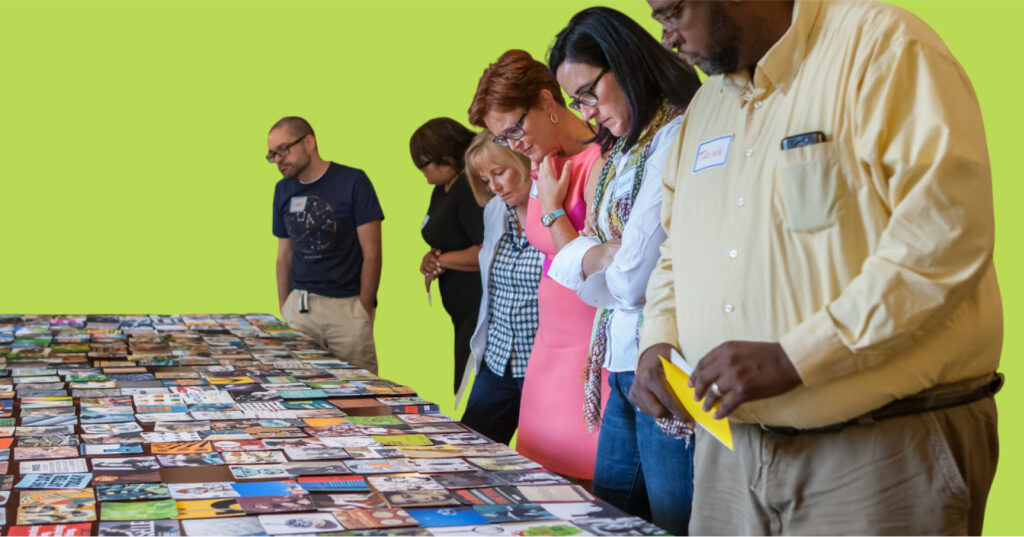We use workshops as a catalyst for all of our projects. We use them to make sense of research, define target audiences, explore brand, plan campaigns, and to organize, design, prototype and test all sorts of things.
Workshops are especially important if you have participants who have day jobs that are unrelated to your project. In this case you want to avoid homework as much as you can, so the workshop becomes the place where their work gets done.
At the beginning of any project or in preparation for a workshop, we take the time to learn as much as we can about the stakeholders, team members and participants. Getting a sense of individual motivations can make a huge difference in your success.
But there are some things everybody wants. These are particularly helpful to factor into your plans.
Everybody wants…
- to feel smart. Nobody likes to be caught unprepared, or to have their idea shot down in front of others. You want to feel like you’re contributing something valuable, that you are creative and your ideas have merit. Many of the workshop exercises we use are designed specifically to draw out ideas from people without the embarrassment of having them criticized prematurely, or wasting a lot of time as a group discussing ideas that aren’t as strong as others.
- to be heard. To know that others hear you, understand what you’ve said, have thought about it, value it and are ready to build on it, is fundamental to building trust and encouraging good communication on a team. We use exercises that model listening and reflection among the group, but as a facilitator you should consider yourself “listener-in-chief.”
- to do meaningful work. Nobody wants to think their work is pointless, and yet people often question whether a project they’re working on will succeed. When people participate in defining the problem, shaping the goal and creating the solution, they stay motivated and engaged from beginning to end.

Designing the flow of a successful workshop.
A good workshop follows a similar arc to a good story. You set the stage, introduce the characters, introduce a problem or conflict, work to bring the problem to resolution, then wind up (or set the stage for a sequel). I deliberately spend part of the time diverging to explore the problem and possible solutions, and part of the time converging on a solution.
- Set the stage.
- Warm up, build trust.
- Scope the challenge for the day.
- Explore the problem.
- Take a Break (either here or after Generate Solutions).
- Generate solutions.
- Run possible solutions through some sort of critical filter.
- Take individual responsibility for next steps.
Diverging and converging
Diverging and converging happens both within individual steps, and as part of the overall workshop. For instance, when you’re exploring the problem (step 4), you’ll probably generate a lot of thoughts about the problem (diverging) but then you will need to decide which aspects of the problem are most important (converging).
When you generate solutions (step 6) you don’t want to just stop at the first good idea; you want to generate many possible solutions (diverging). But then you need some way to zero in on the most strategic or viable solutions (converging). Select exercises that support this flow from divergence to convergence.
Brainstorming productively
Brainstorming sounds fun, but it can often be frustrating and unproductive. How many times have you watched someone in front of a flipchart recording ideas that people threw out? There’s a better way.
No bad ideas?
You’ve probably heard a facilitator begin a brainstorming session with the encouragement, “There are no bad ideas.” I’m sorry, but there are bad ideas. I have them all the time. So better brainstorming needs to provide a way to generate lots of good and bad ideas, then graciously select the ideas worthy of the group’s time. You have to get through the less good ideas to get to the better ideas.
A Person ≠ Their Ideas
But bad ideas are embarrassing. In a workshop setting, depending on the size of the group and everyone’s comfort level with each other, people may be intimidated to share their ideas freely. It feels too much like you are putting yourself out there instead of your idea, and the way people respond can affect your self esteem. Everyone wants to feel smart, remember?
How do you avoid that? One of the most important principles we’ve learned in facilitating is that a person does not equal their ideas. So we work on ways to create comfortable distance between a person and their ideas. Many of our exercises use some variation of individual brainstorming followed by a step that creates safe distance.
Brainstorm individually first.

For example:
- Tell everyone to generate several ideas in a short timeframe
- Write answers on sticky notes
- Sketch or storyboard
Create distance.

For example:
- Put ideas on the wall instead of speaking them out loud (like in KJ Sessions and Experience Mapping)
- Explain ideas/tell stories to a partner; have the partner describe them to the group
- Have a partner build on what you sketched, creating the next step
Mix individual and group work.
People will come up with different things on their own from what they would in a group. Group activities naturally favor extroverts, too. You can ensure those individual ideas aren’t lost by giving people a chance to think about a problem and work on their own before moving to a group activity. I go back and forth between individual and group work during the course of a workshop.
Ready to dive in?
Here are just a few of the workshop techniques and exercises we often use:
